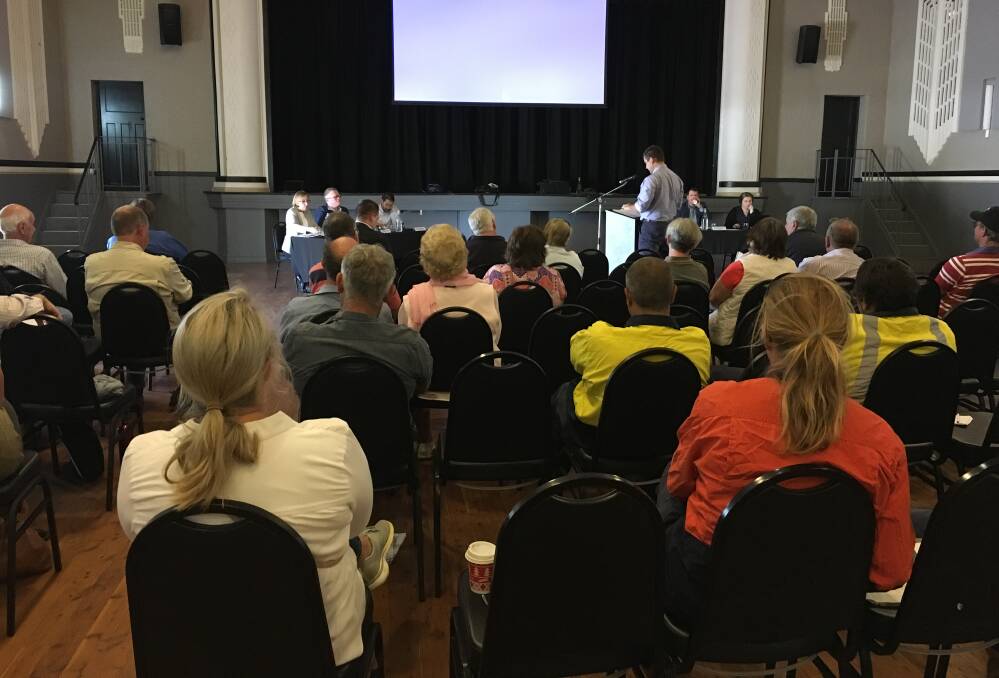
THE Independent Planning Commission (IPC) will meet with Gunnedah Shire Council and visit the proposed Gunnedah Solar Farm site tomorrow, as it continues to consider the project.
Subscribe now for unlimited access.
or signup to continue reading
More than 40 people attended a public meeting hosted by the IPC at the town hall this morning, at which six local people spoke.
An IPC spokesman said many variables could now affect how long the commission took to reach a decision on the project.
“Usually a determination takes six to seven weeks, but it depends on several factors,” they said.
Read also:
They included the commission requesting more information from the proponents, the Department of Planning and Environment or an independent expert on any issues.
The public meeting allowed registered speakers to address the IPC panel on their areas of concern.
Most of the nearby residents talked about the potential for, impact of, and mitigation of flooding on the 304-hectare site along Orange Grove Road.
Phil Glover said “Photon should have walked away from this project” when the risk of flooding was revealed.
“We have seen some improvements in the proposal … These adjustments are welcome, but it is an admission that there is a serious problem with flooding,” he said.
Rob Galton said a major flood was “inevitable” and he was “deeply concerned for our close neighbours and friends [who] have invested a lot of hard work and money” in their properties.
Graeme Brown said: “The floodwaters are unpredictable in this area, and they rise very fast and the water moves very fast … People living to the south are understandably very worried about this.”
Fencing fears
Many speakers said they were sceptical about the drop-down fencing proposed to reduce the impact of flooding; whether an automatic system would be timely and effective, and whether a manual system would even be possible.
Geoff Hood said: “If this proposed development is to be approved, there has to be a certainty that a drop-down fence will work.”
Mr Glover said: “The method of opening the fence needs to be immediate and failsafe.”
Tony Affleck said he’d lived in the area since 1965, had even leased that land for three years, and had “seen a lot of floods”.
“In ’98 I lost all my crops; we had four floods in three months, roughly,” he said.
“In heavy rain, you could not access that country – you wouldn’t be able to drive up it, you wouldn’t be able to walk up it.”
Visual impact
Speakers also talked about the visual impact of the approximately 460,000 solar panels proposed, particularly from houses at elevation to the site.
Chris Avard said these residents had paid “a premium to enjoy the aspect” and a contact who was “a respected valuer in the area” had told him there could be a drop in their property values of 15 to 20 per cent.
“Like most Australians, my home is my biggest asset,” he told the NVI.
“They’re ripping away a fair bit of the value.”
Mr Affleck told the panel many people would consider their property as their superannuation.
“If the solar farm goes ahead, who’s going to really want to walk in and purchase a property overlooking a solar farm, without [the vendor] taking a fair hit in the price? …
“We love the way we live – everybody who comes to our farm looks out our back door and looks at our view tells us, ‘This is unreal’.”


